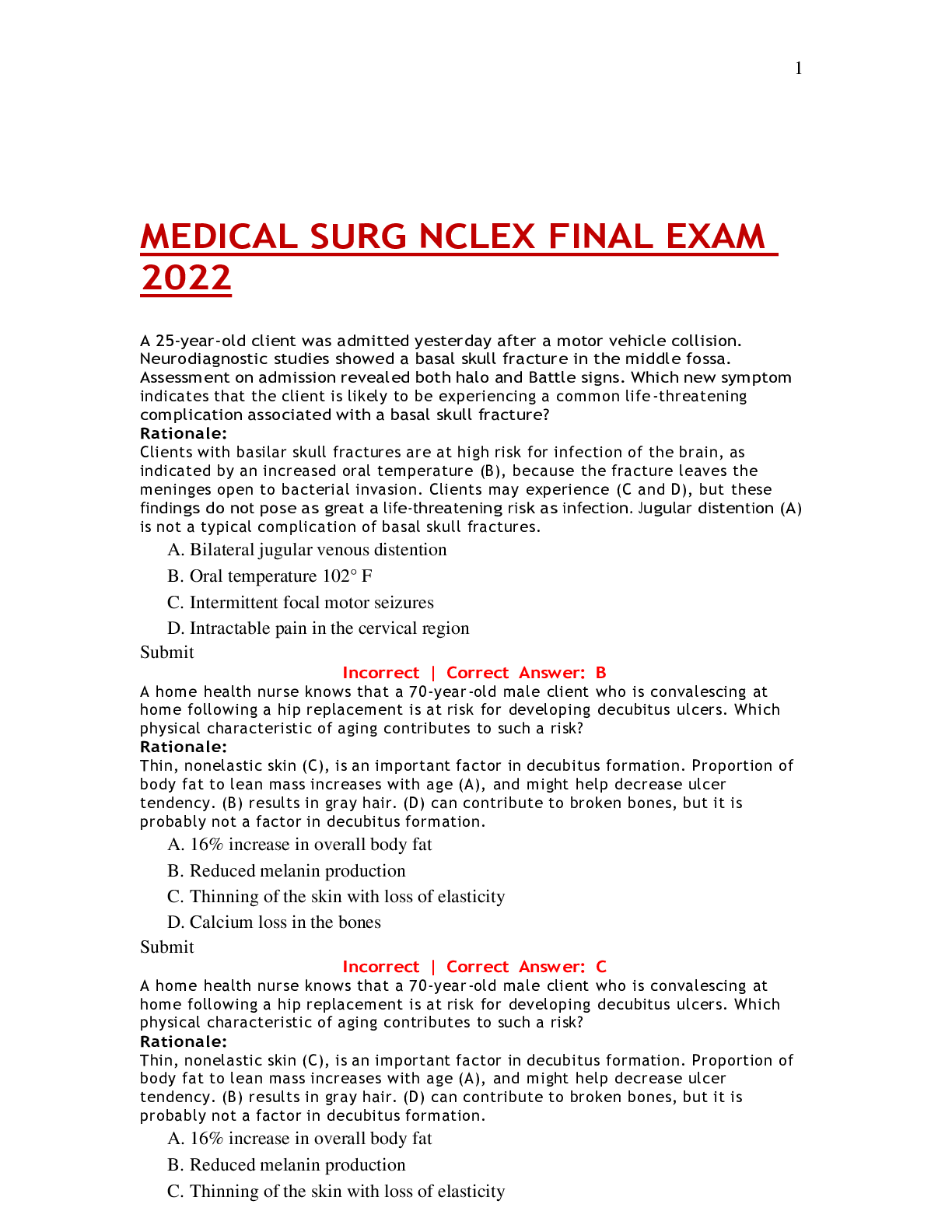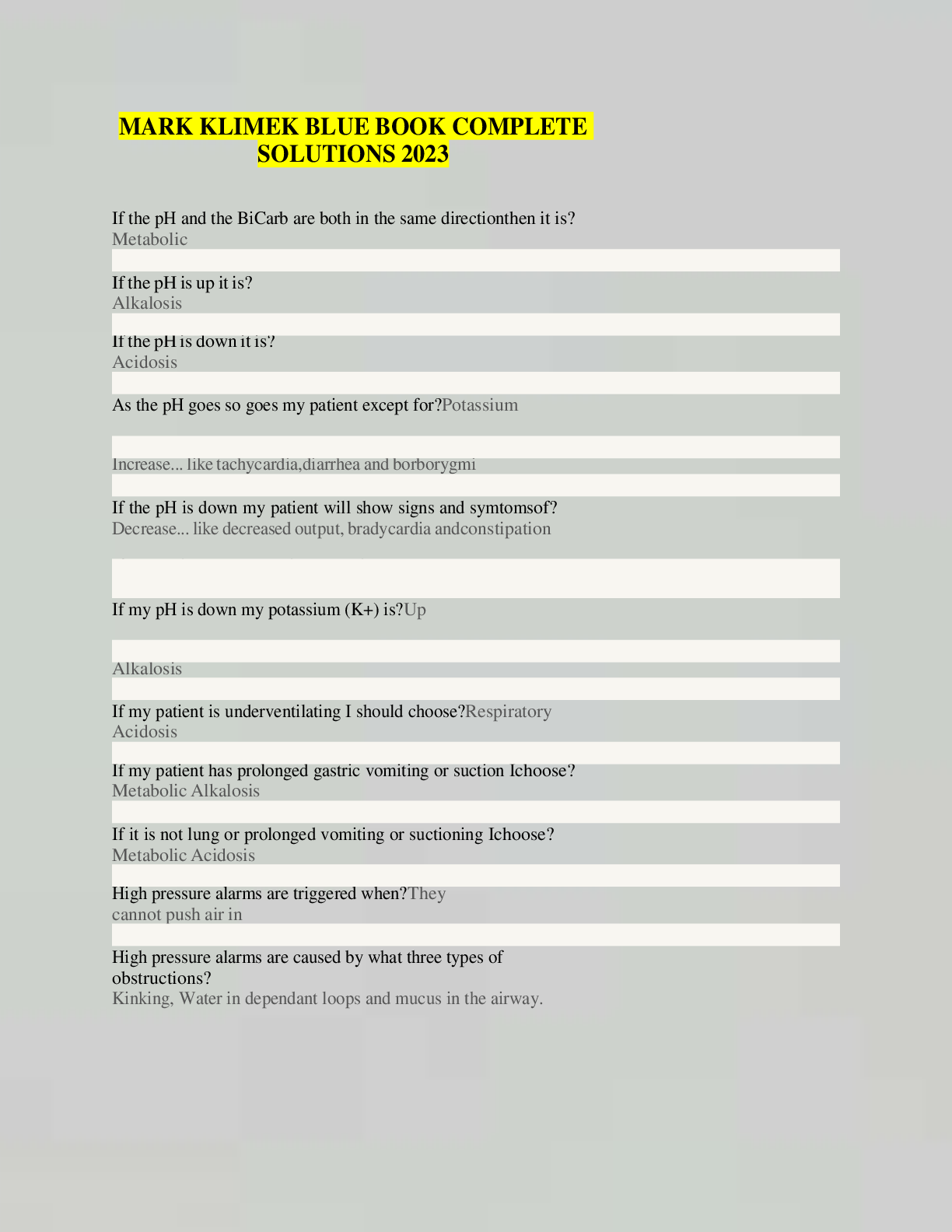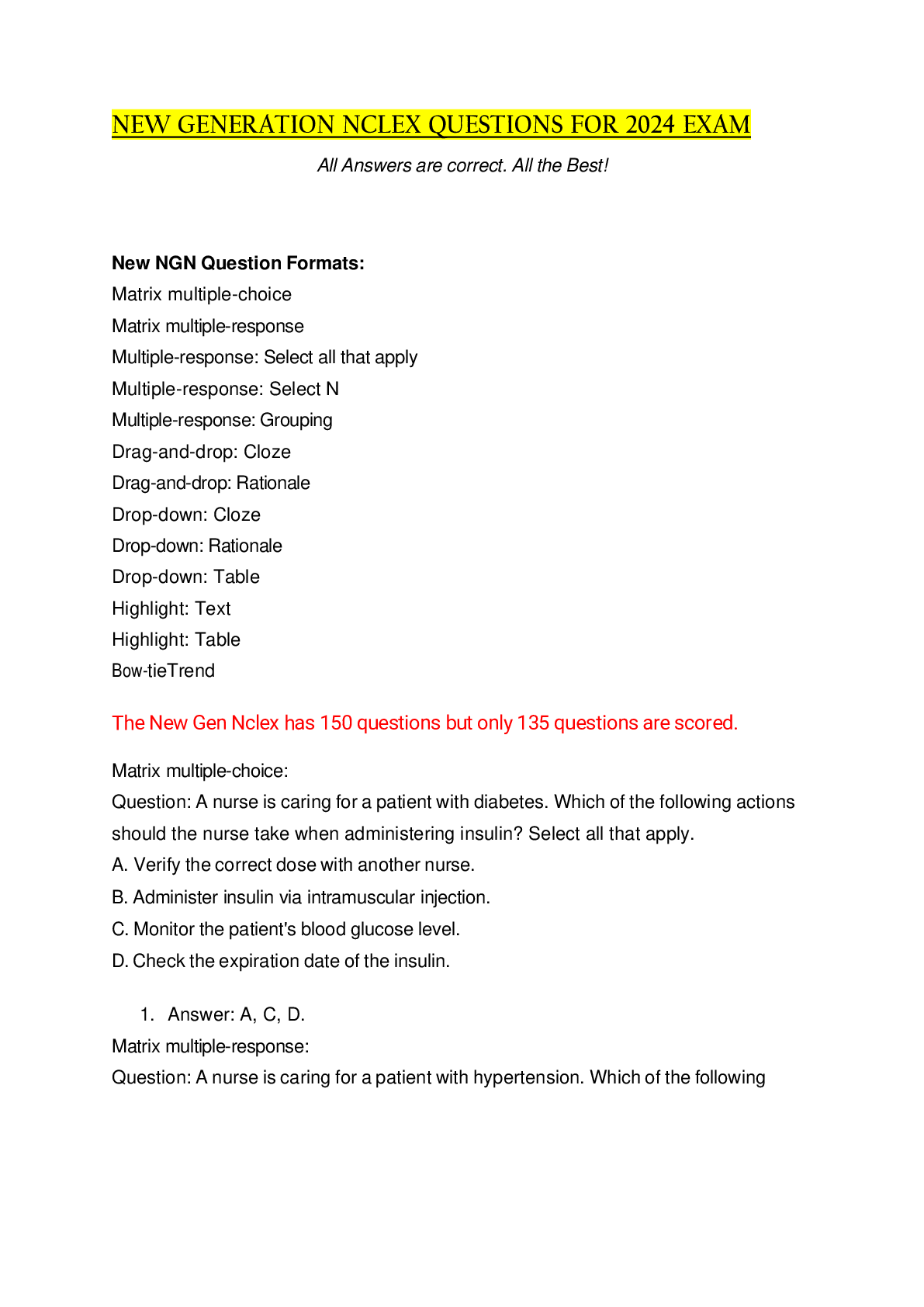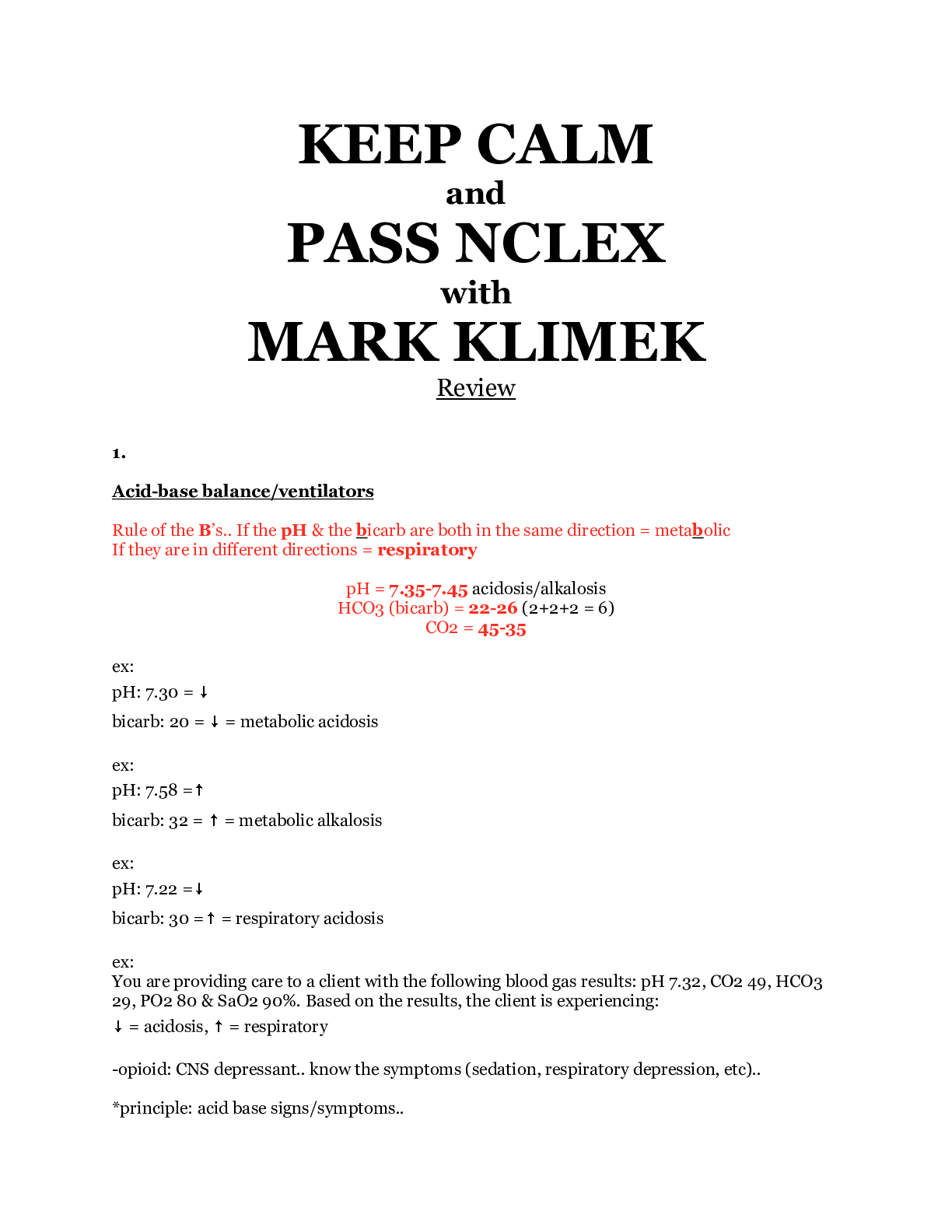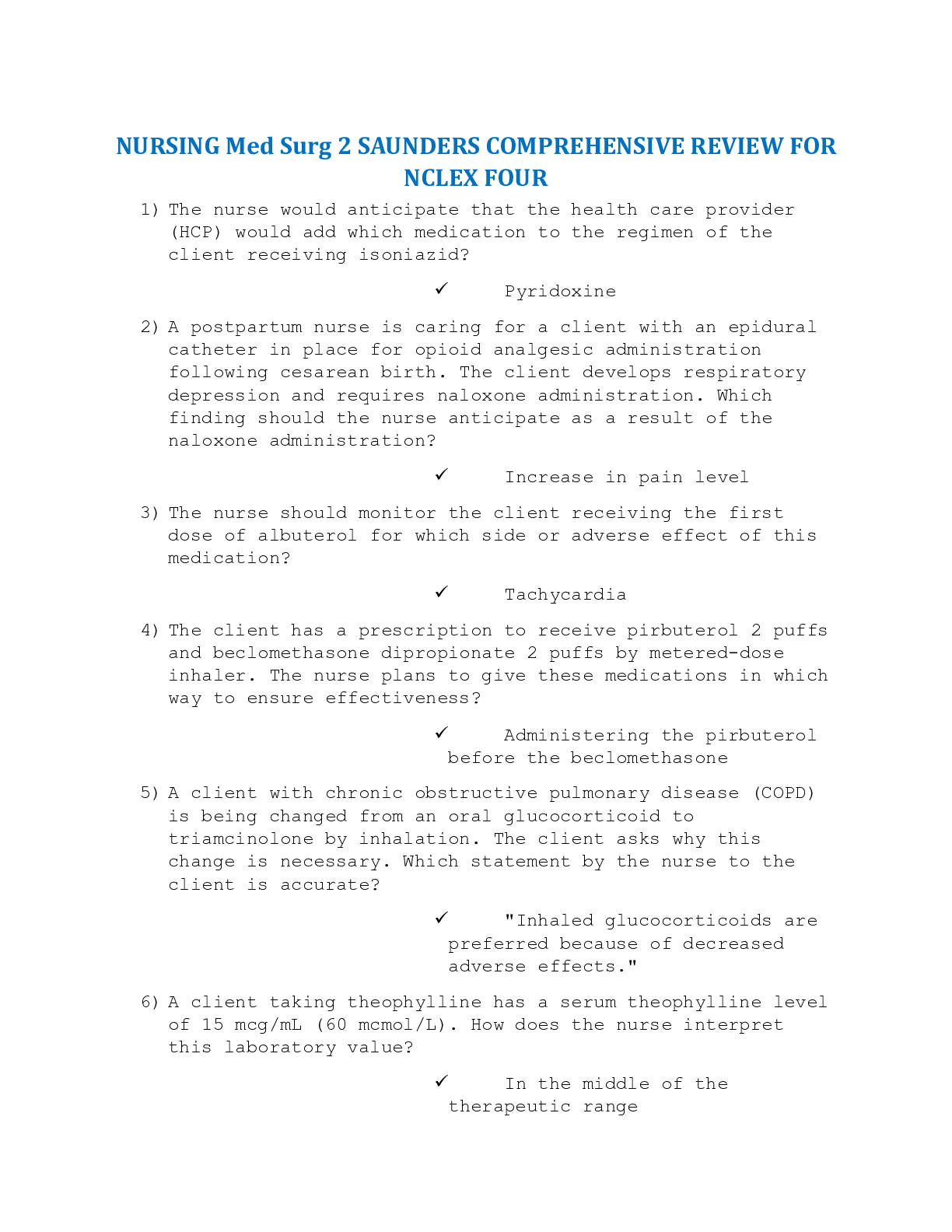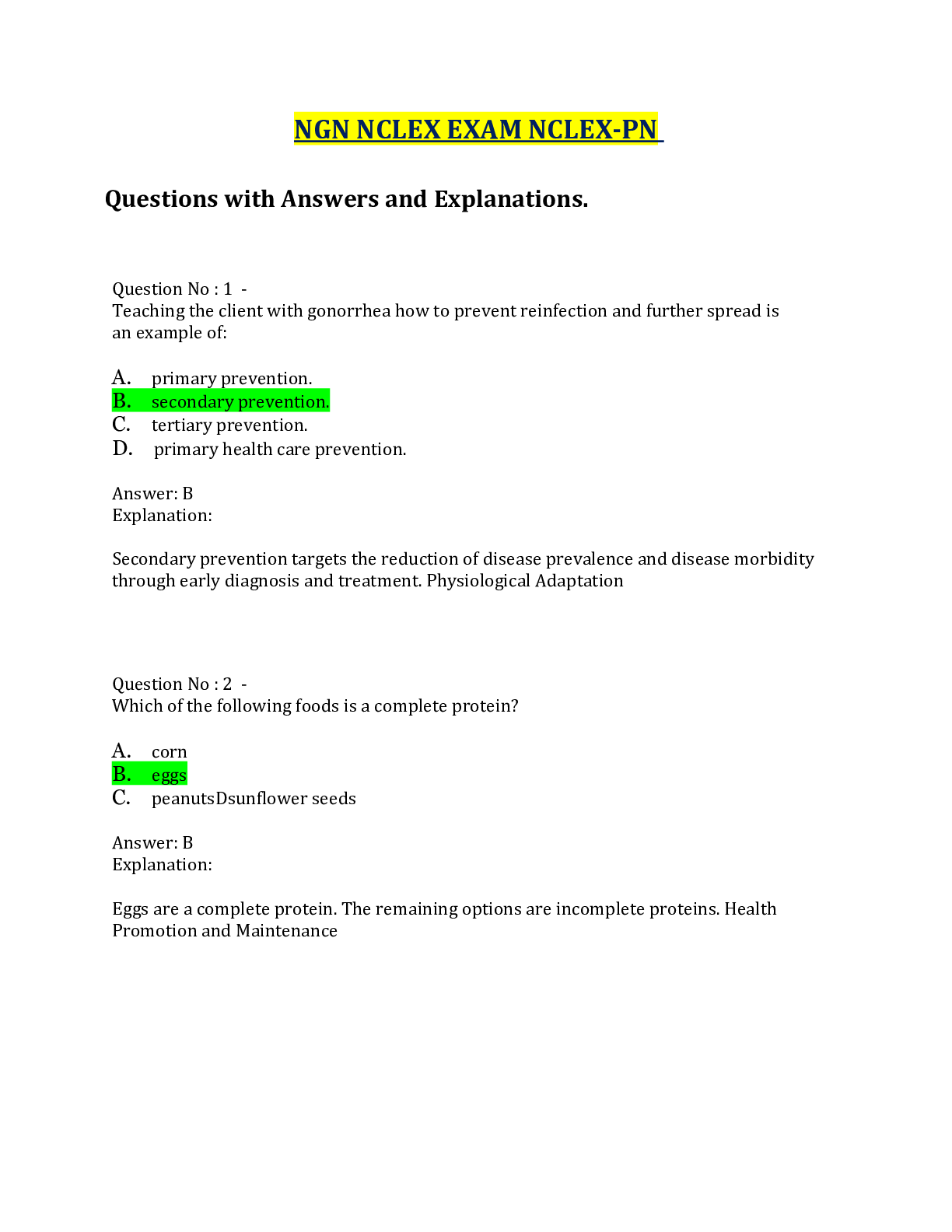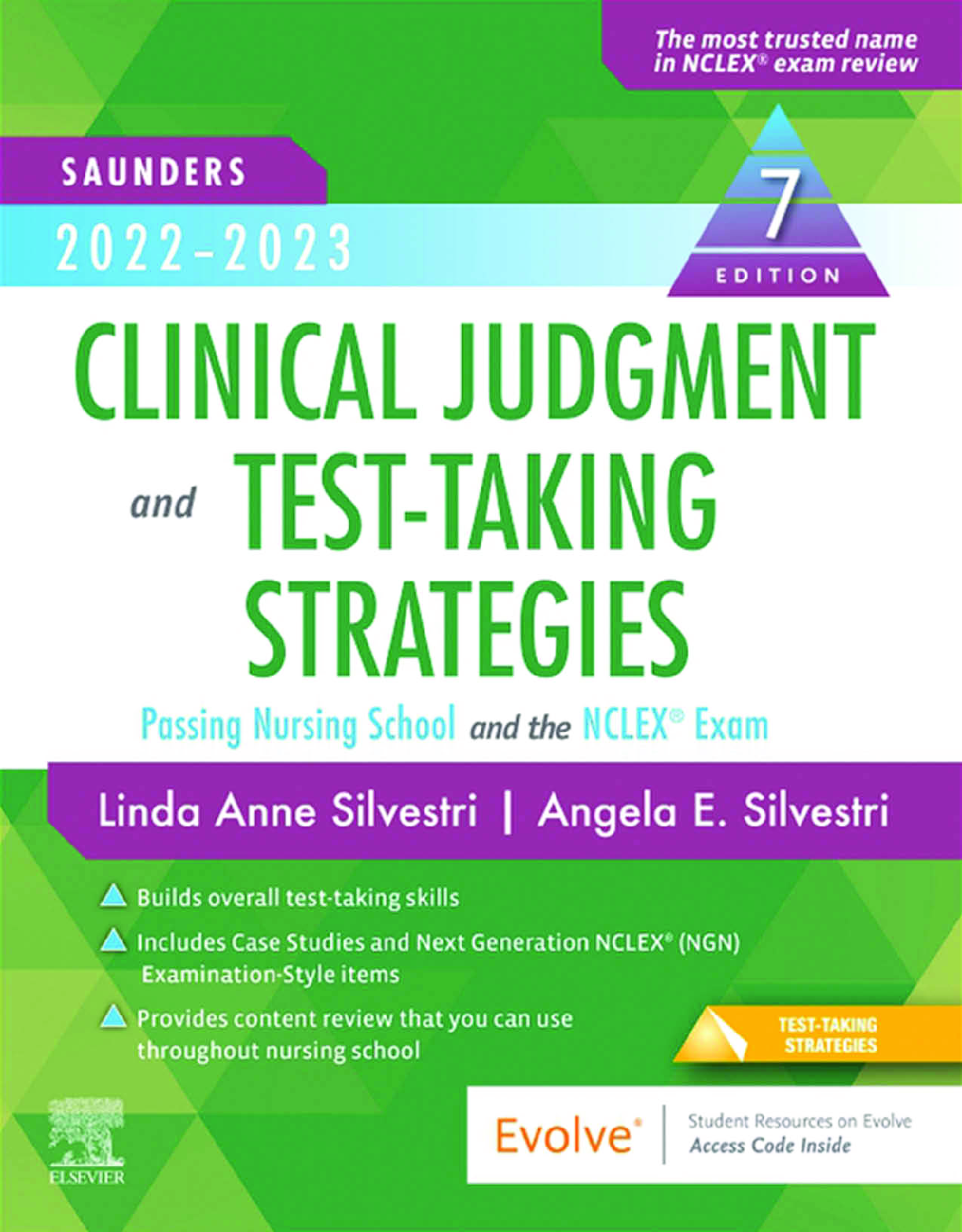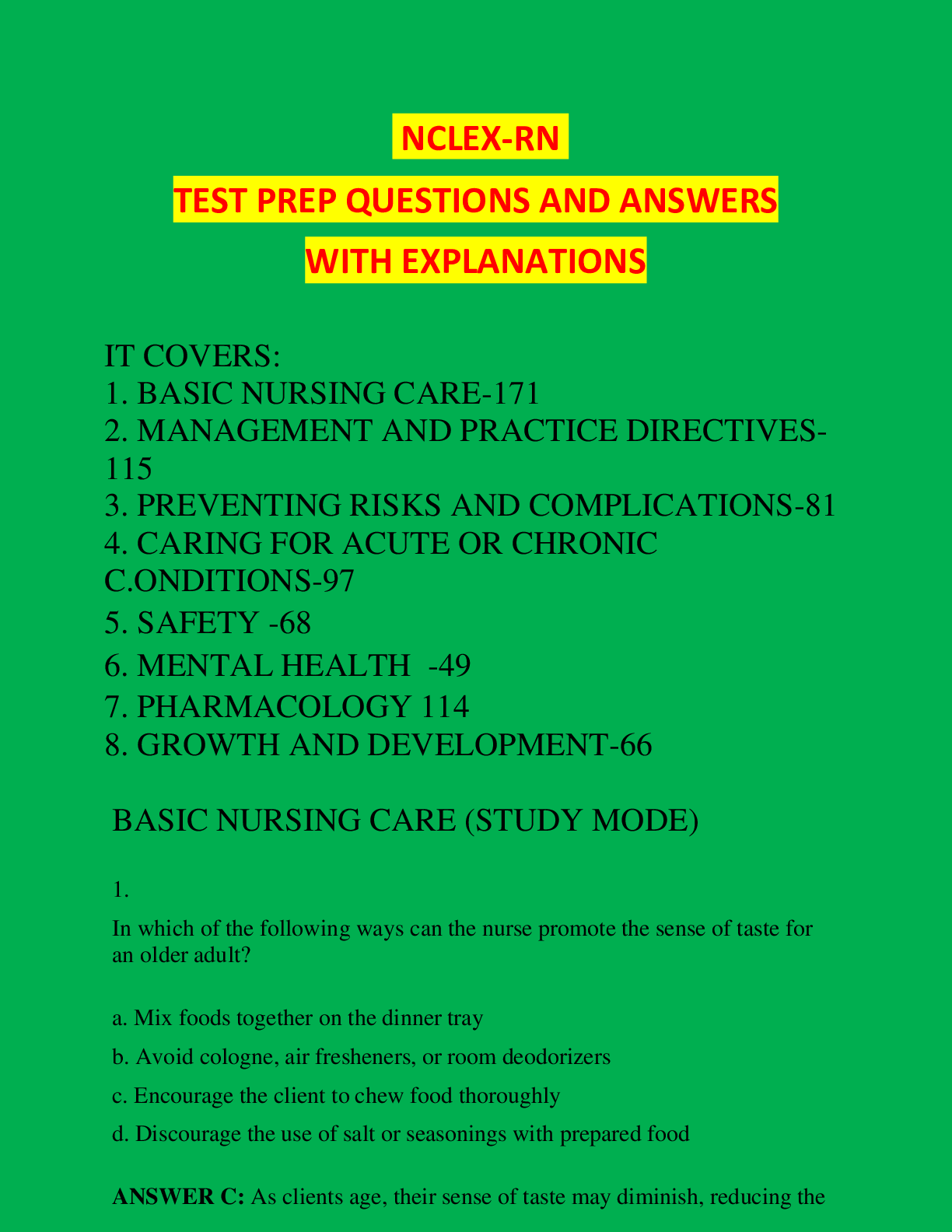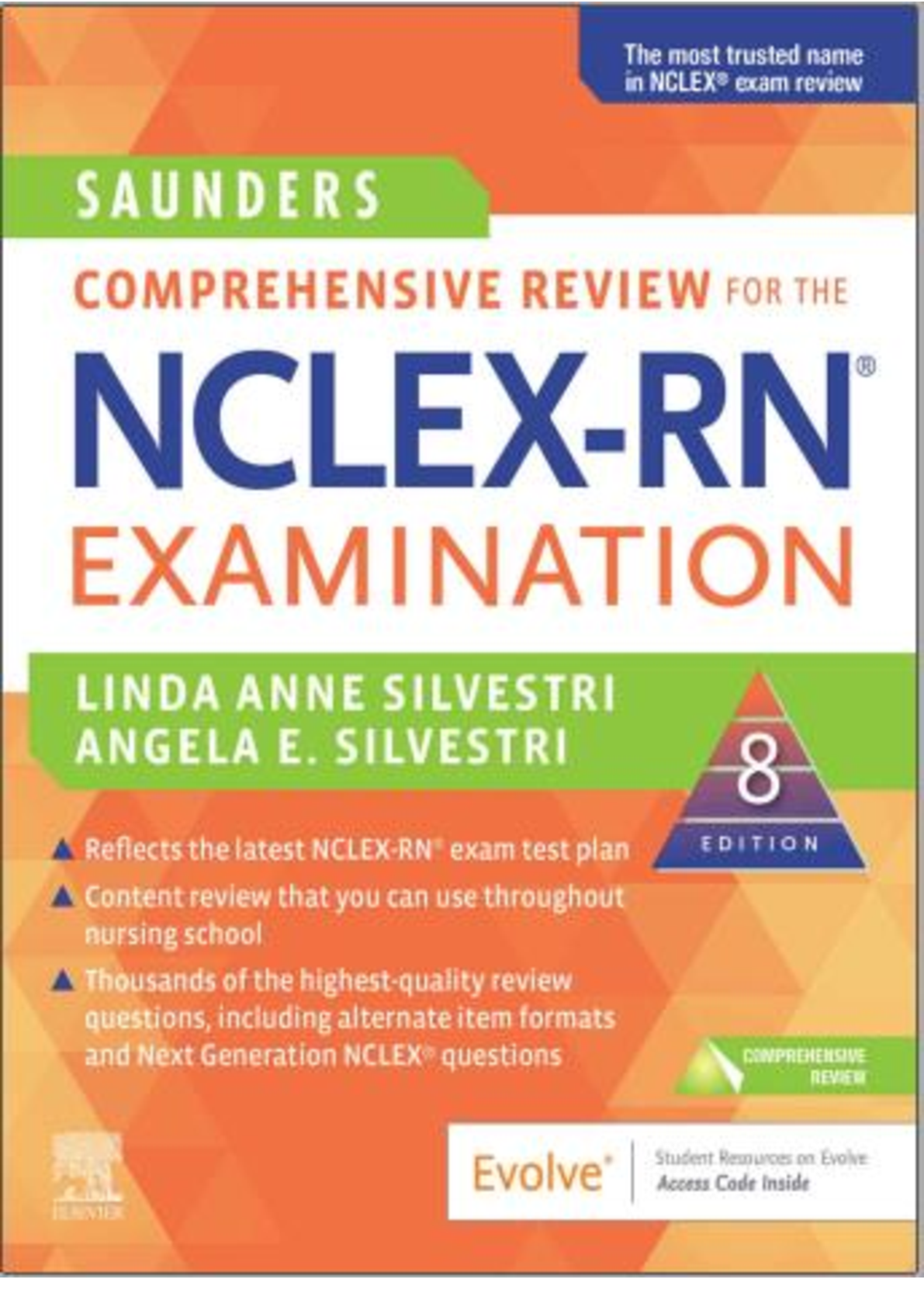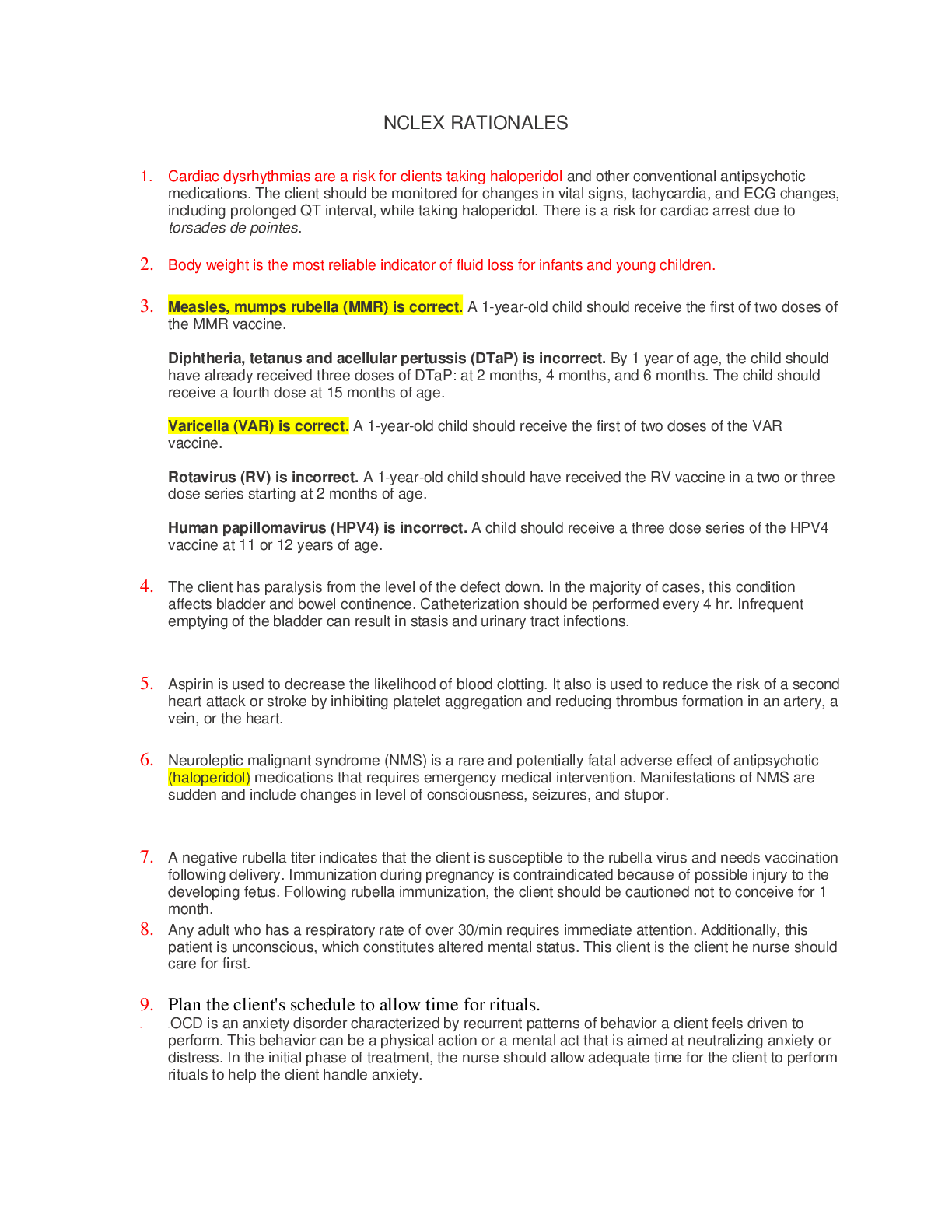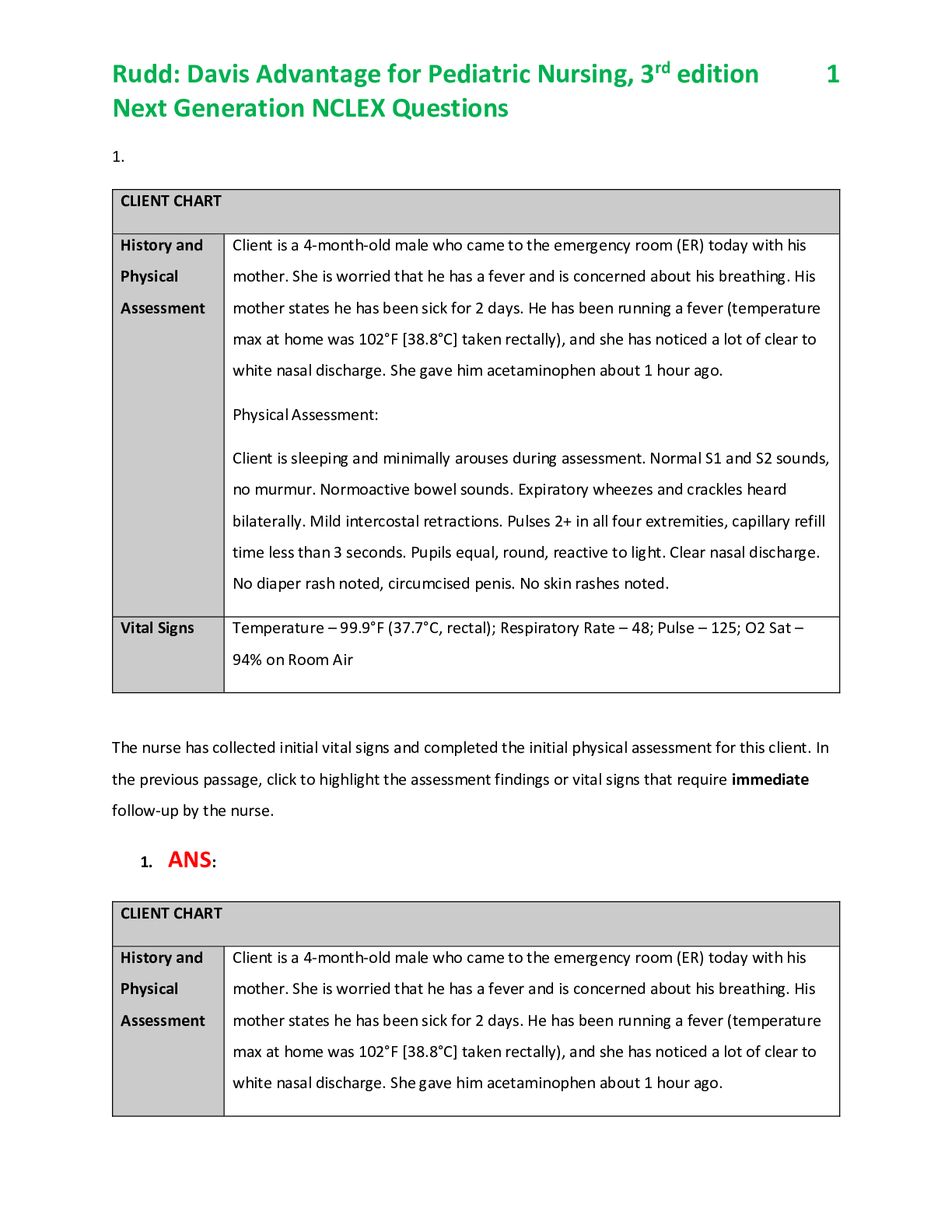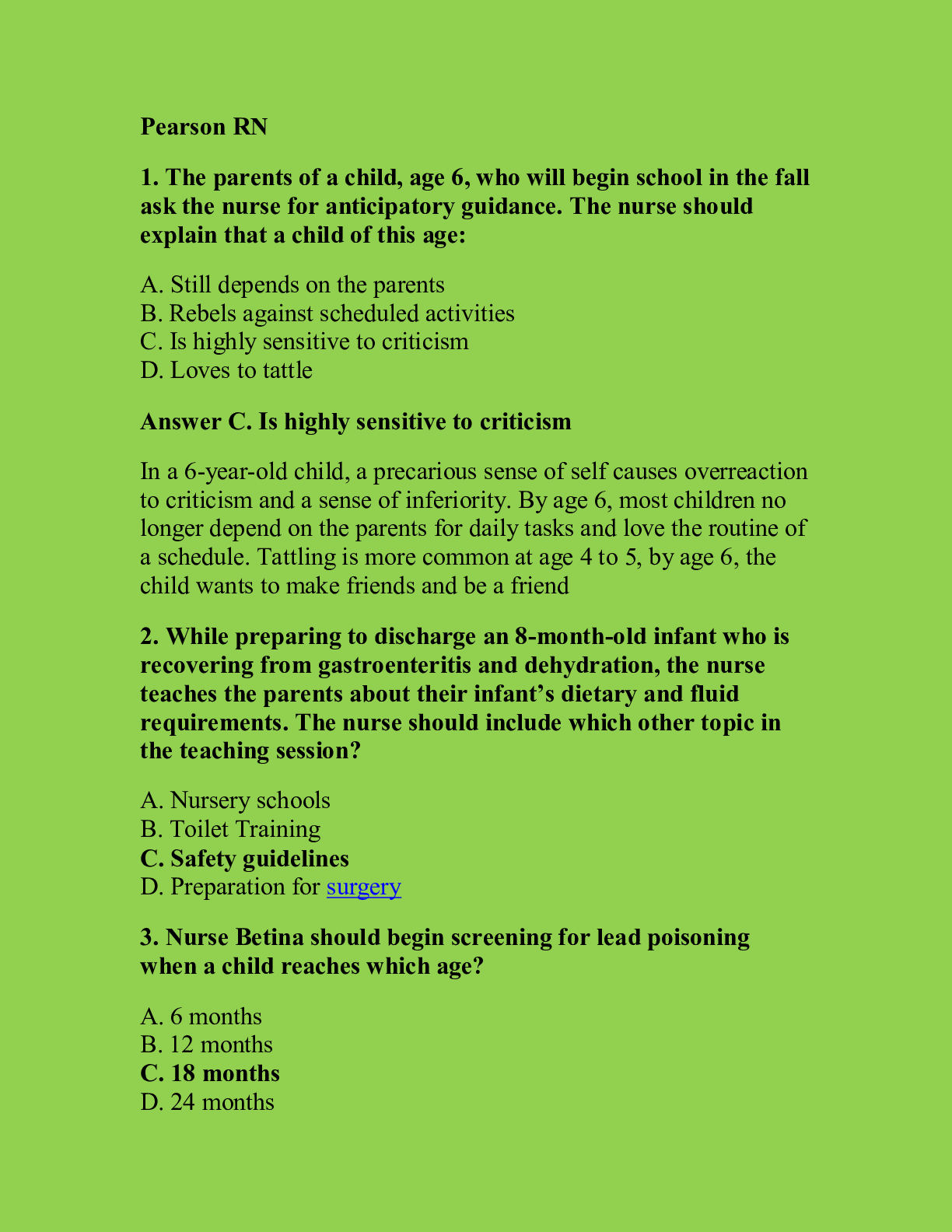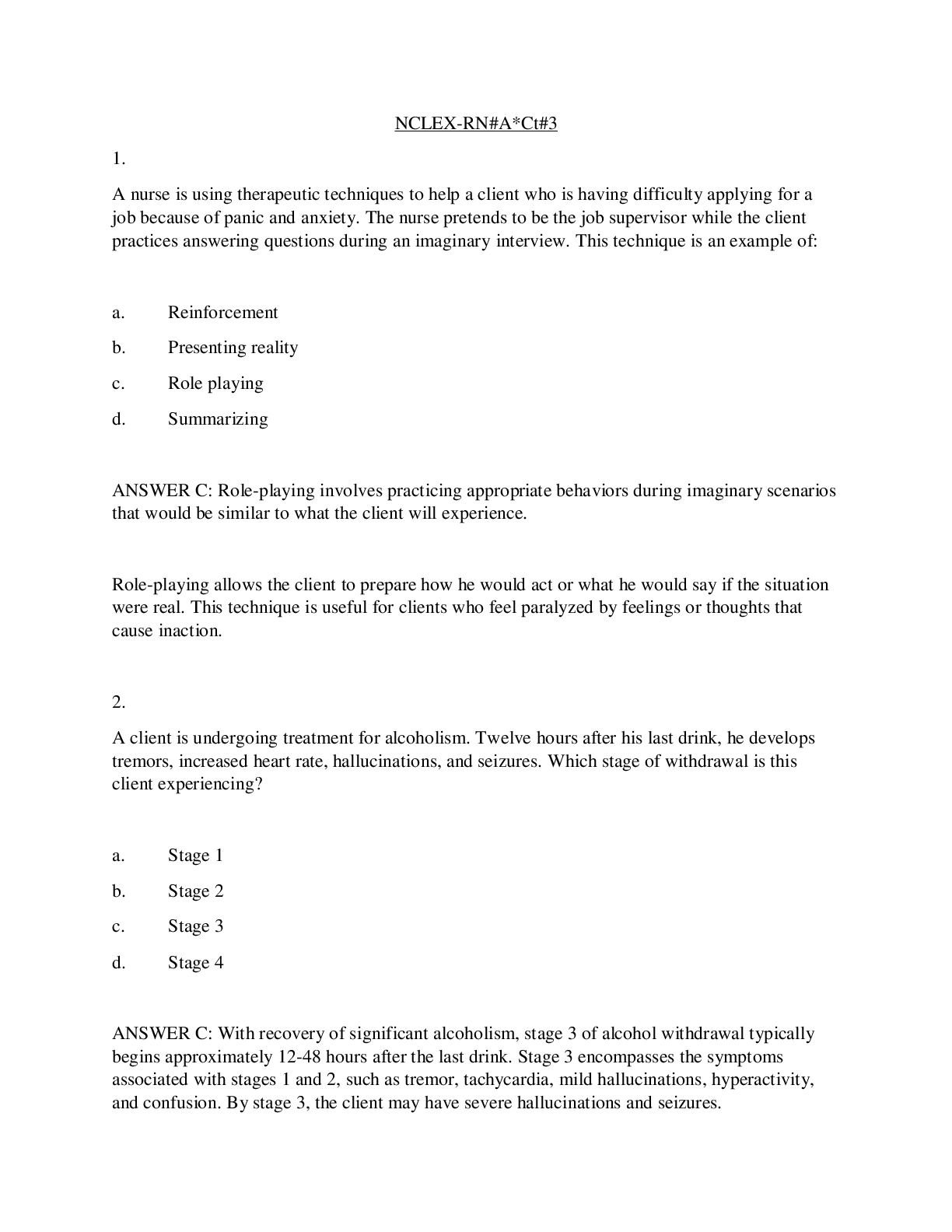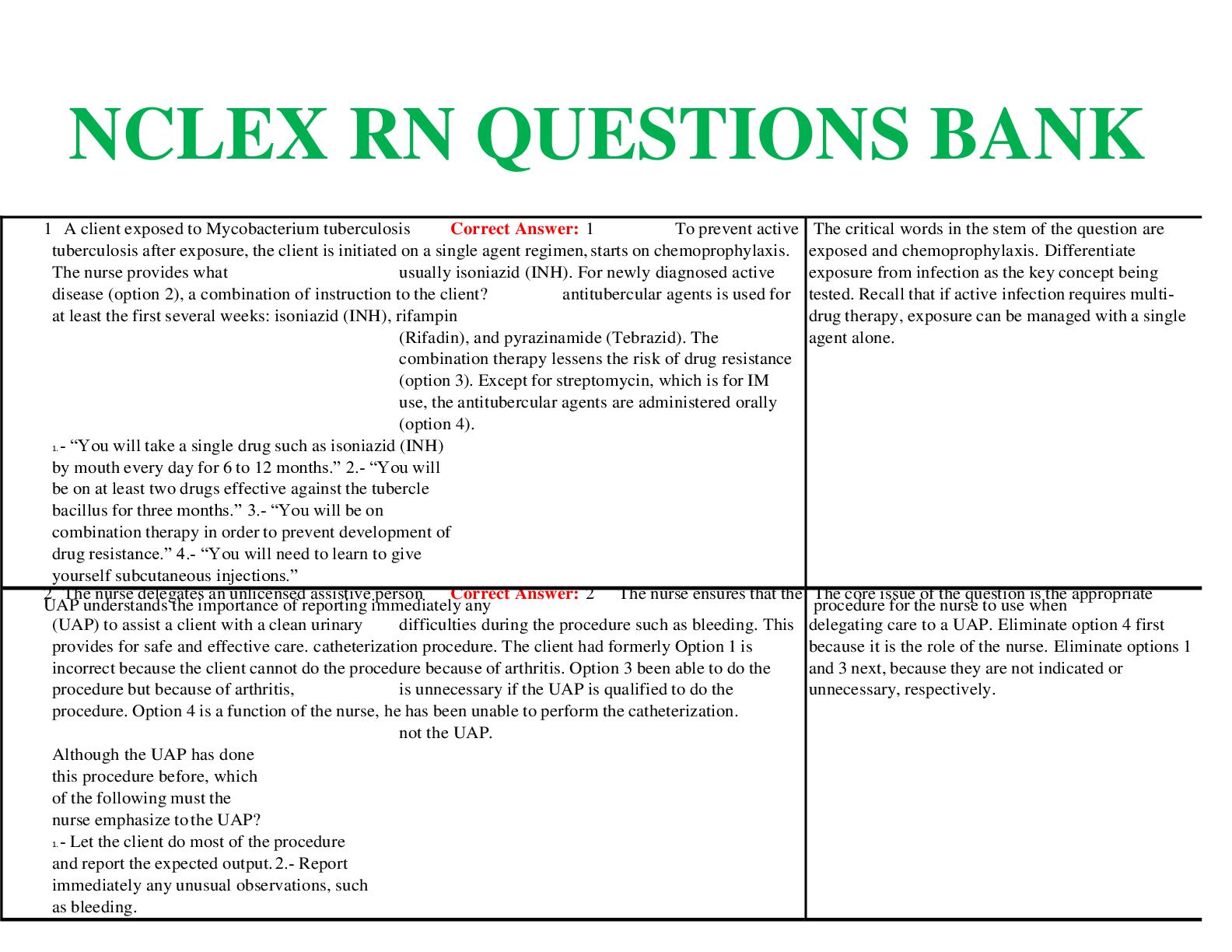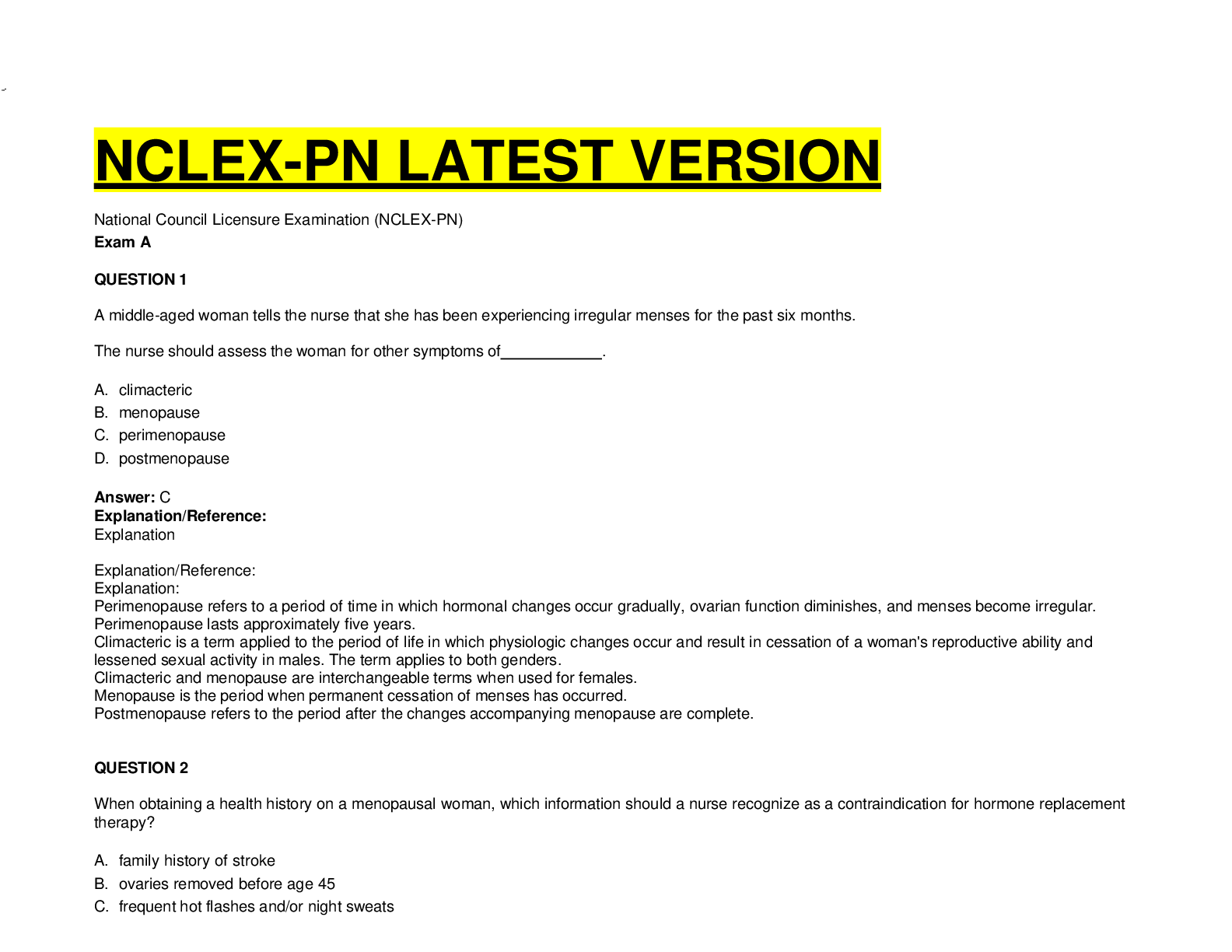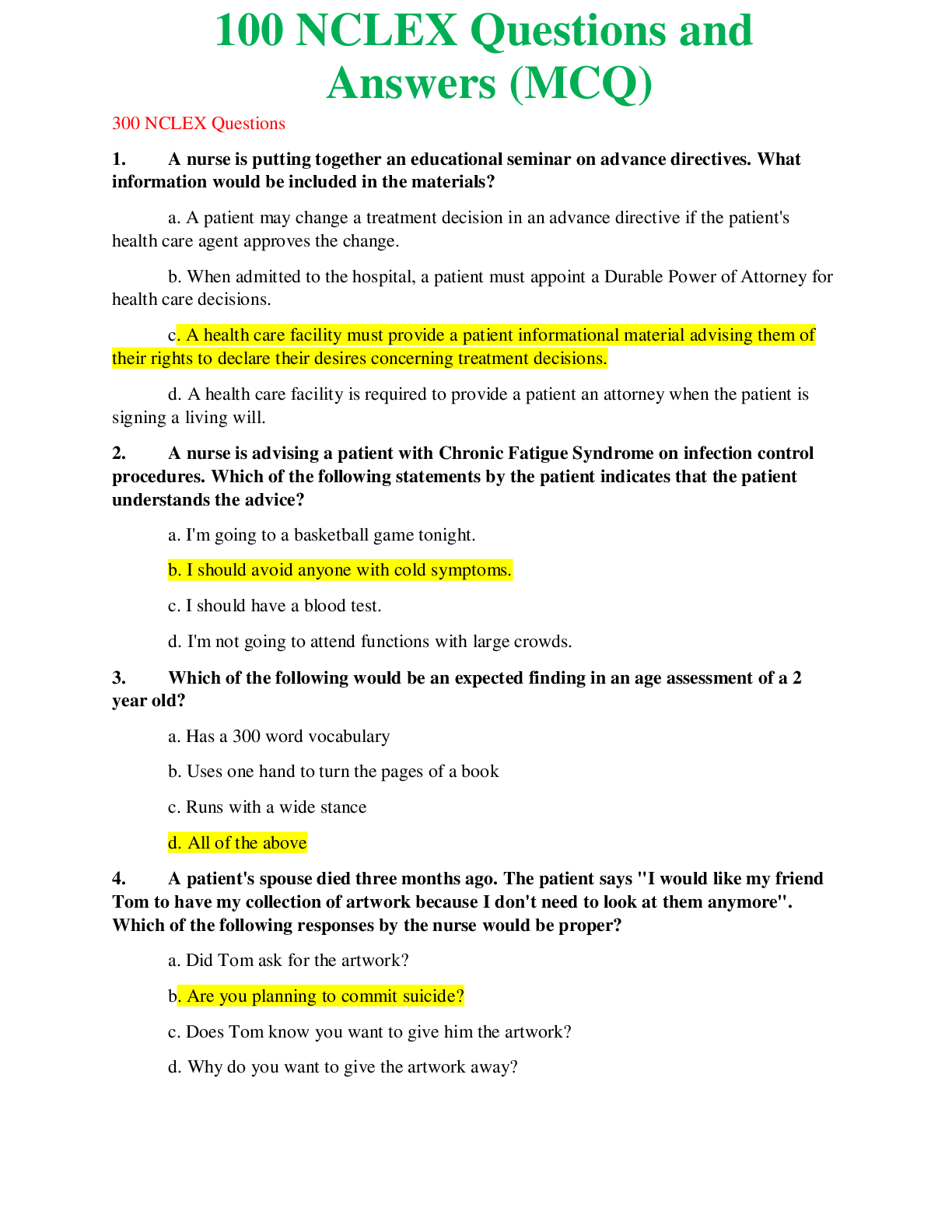NURSING 101 Actualtests NCLEX-RN - P1. 2021
Document Content and Description Below
QUESTION 1 A 25-year-old client believes she may be pregnant with her first child. She schedules an obstetric examination with the nurse practitioner to determine the status of her possible pregnanc... y. Her last menstrual period began May 20, and her estimated date of confinement using Nägele's rule is: A. March 27 B. February 1 C. February 27 D. January 3 Correct Answer: C Section: (none) Explanation Explanation/Reference: Explanation: (A)March 27 is a miscalculation. (B) February 1 is a miscalculation. (C) February 27 is the correct answer. To calculate the estimated date of confinement using Nagele's rule, subtract 3 months from the date that the last menstrual cycle began and then add 7 days to the result. (D) January 3 is a miscalculation. QUESTION 2 The nurse practitioner determines that a client is approximately 9 weeks' gestation. During the visit, the practitioner informs the client about symptoms of physical changes that she will experience during her first trimester, such as: A. Nausea and vomiting B. Quickening C. A 68 lb weight gain D. Abdominal enlargement Correct Answer: A Section: (none) Explanation Explanation/Reference: Explanation: (A) Nausea and vomiting are experienced by almost half of all pregnant women during the first 3 months of pregnancy as a result of elevated human chorionic gonadotropin levels and changed carbohydrate metabolism. (B) Quickening is the mother's perception of fetal movement and generally does not occur until 1820 weeks after the last menstrual period in primigravidas, but it may occur as early as 16 weeks in multigravidas. (C) During the first trimester there should be only a modest weight gain of 24 lb. It is not uncommon for women to lose weight during the first trimester owing to nausea and/or vomiting. (D) Physical changes are not apparent until the second trimester, when the uterus rises out of the pelvis. QUESTION 3 A 38-year-old pregnant woman visits her nurse practitioner for her regular prenatal checkup. She is 30 weeks' gestation. The nurse should be alert to which condition related to her age? A. Iron-deficiency anemia B. Sexually transmitted disease (STD) C. Intrauterine growth retardation D. Pregnancy-induced hypertension (PIH) Correct Answer: D Section: (none) Explanation Explanation/Reference: Explanation: (A) Iron-deficiency anemia can occur throughout pregnancy and is not age related. (B) STDs can occur prior to or during pregnancy and are not age related. (C) Intrauterine growth retardation is an abnormal process where fetal development and maturation are delayed. It is not age related. (D) Physical risks for the pregnant client older than 35 include increased risk for PIH, cesarean delivery, fetal and neonatal mortality, and trisomy. QUESTION 4 A client returns for her 6-month prenatal checkup and has gained 10 lb in 2 months. The results of her physical examination are normal. How does the nurse interpret the effectiveness of the instruction about diet and weight control? http://www.gratisexam.com/ A. She is compliant with her diet as previously taught. B. She needs further instruction and reinforcement. C. She needs to increase her caloric intake. D. She needs to be placed on a restrictive diet immediately. Correct Answer: B Section: (none) Explanation Explanation/Reference: Explanation: (A) She is probably not compliant with her diet and exercise program. Recommended weight gain during second and third trimesters is approximately 12 lb. (B) Because of her excessive weight gain of 10 lb in 2 months, she needs re-evaluation of her eating habits and reinforcement of proper dietary habits for pregnancy. A 2200-calorie diet is recommended for most pregnant women with a weight gain of 2730 lb over the 9-month period. With rapid and excessive weightgain, PIH should also be suspected. (C) She does not need to increase her caloric intake, but she does need to re-evaluate dietary habits. Ten pounds in 2 months is excessive weight gain during pregnancy, and health teaching is warranted. (D) Restrictive dieting is not recommended during pregnancy. QUESTION 5 Diabetes during pregnancy requires tight metabolic control of glucose levels to prevent perinatal mortality. When evaluating the pregnant client, the nurse knows the recommended serum glucose range during pregnancy is: A. 70 mg/dL and 120 mg/dL B. 100 mg/dL and 200 mg/dL C. 40 mg/dL and 130 mg/dL D. 90 mg/dL and 200 mg/dL Correct Answer: A Section: (none) Explanation [Show More]
Last updated: 1 year ago
Preview 1 out of 424 pages
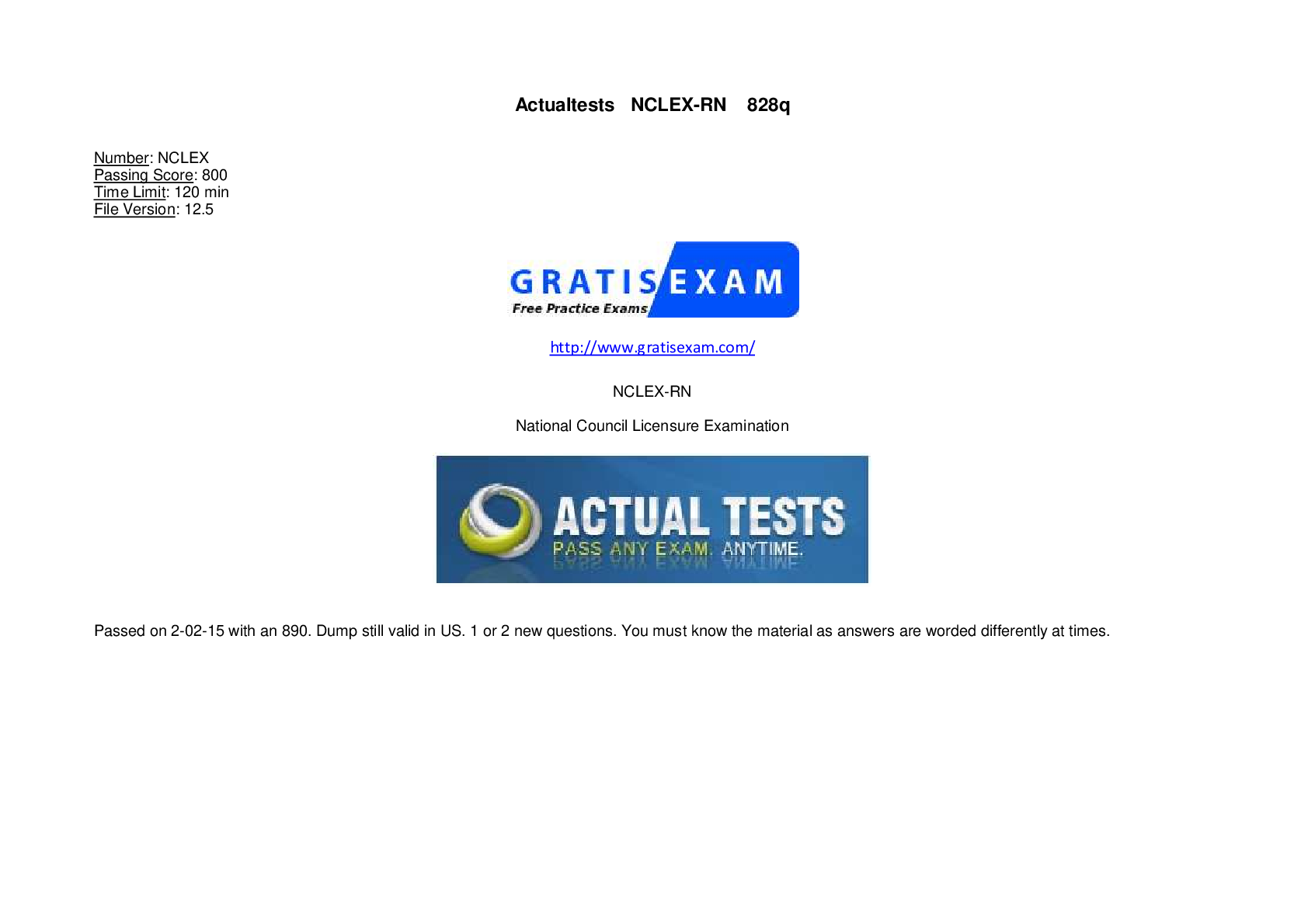
Reviews( 0 )
Document information
Connected school, study & course
About the document
Uploaded On
Sep 07, 2022
Number of pages
424
Written in
Additional information
This document has been written for:
Uploaded
Sep 07, 2022
Downloads
0
Views
53

